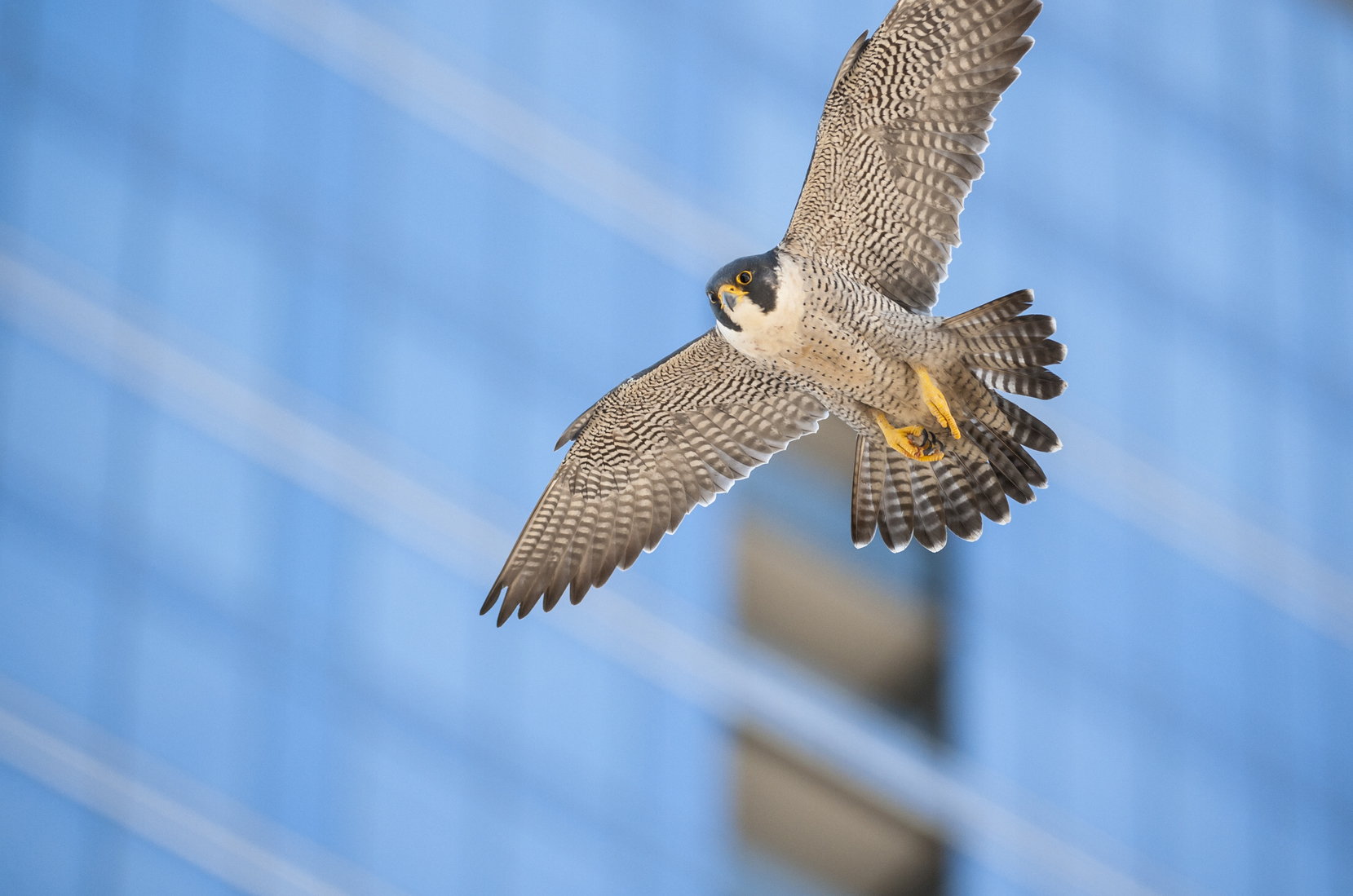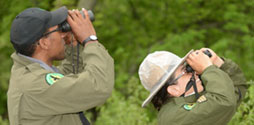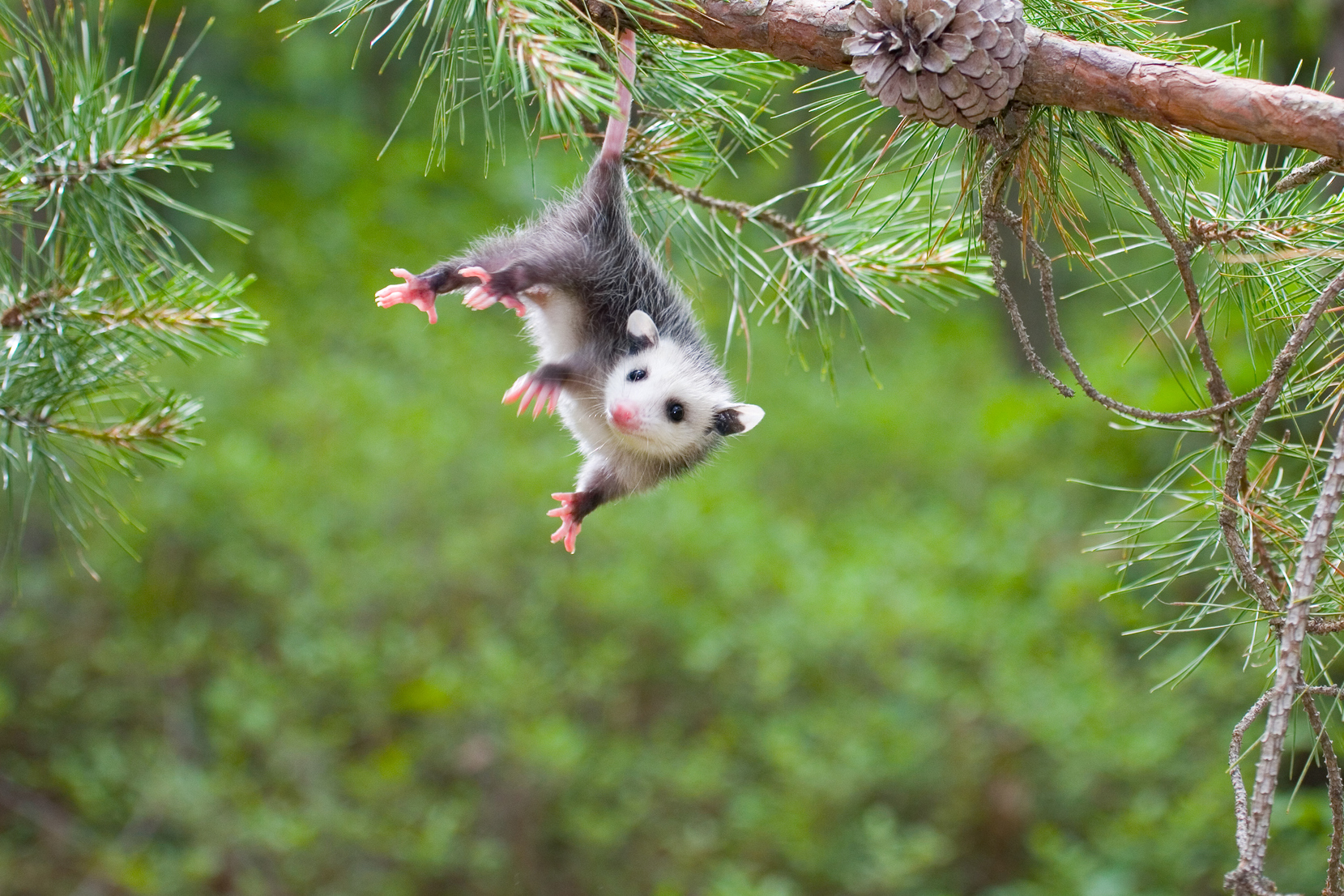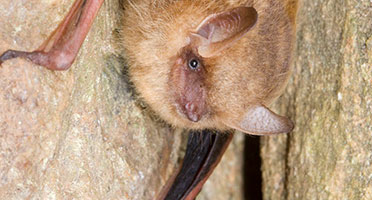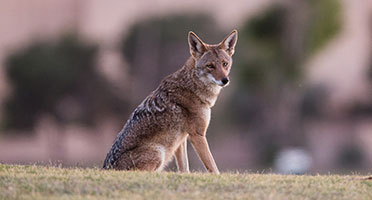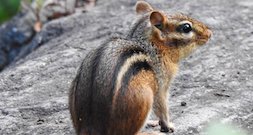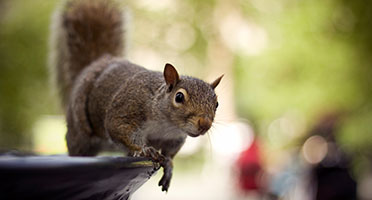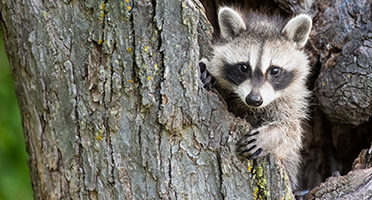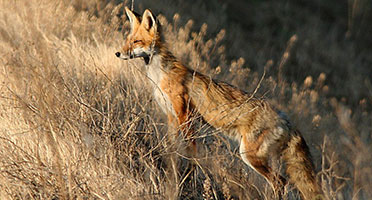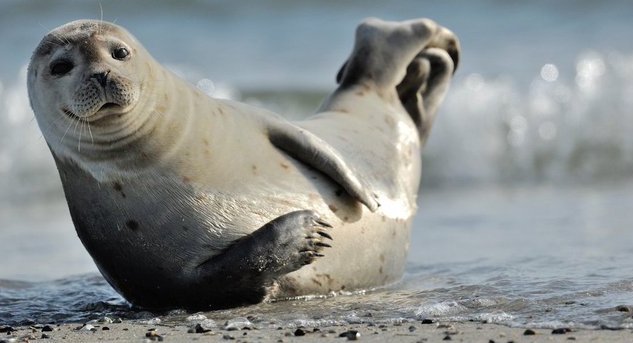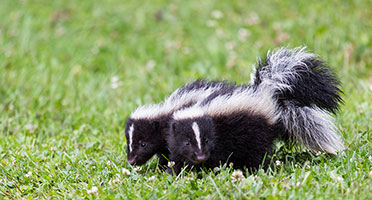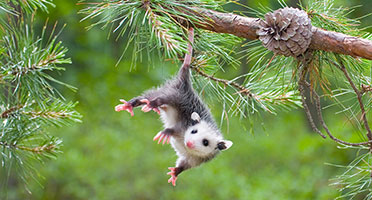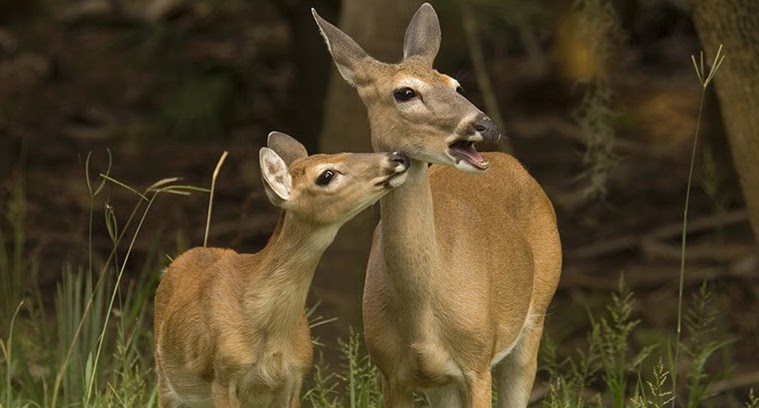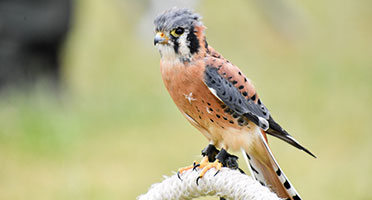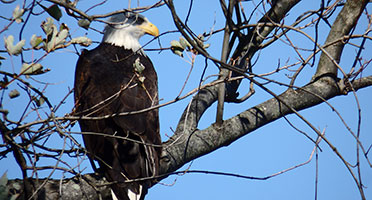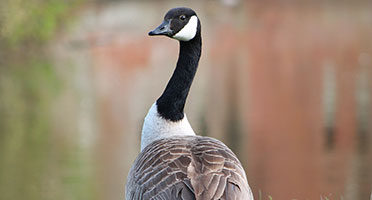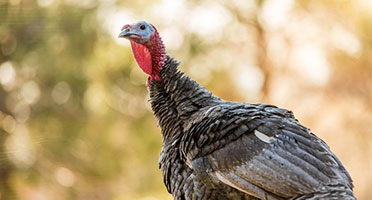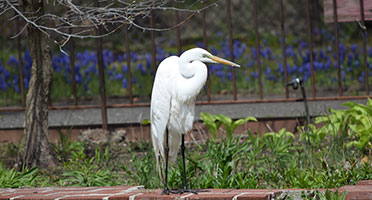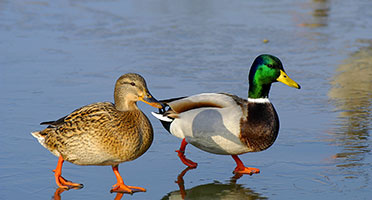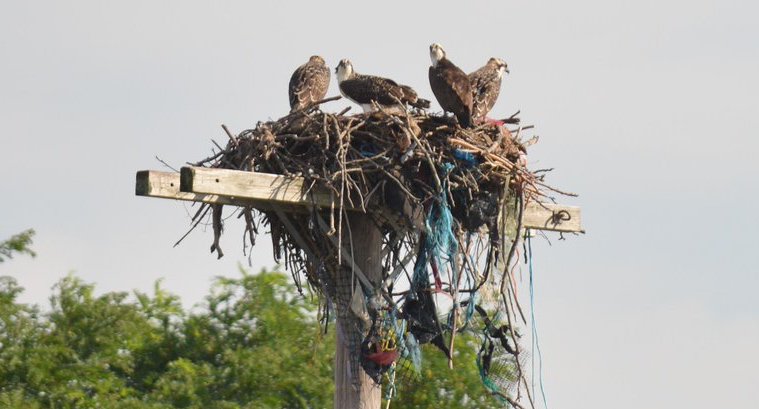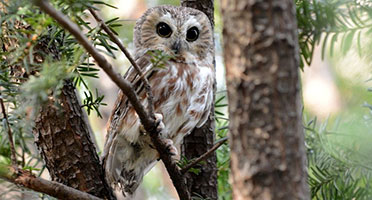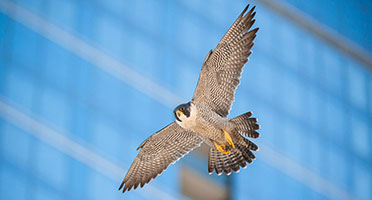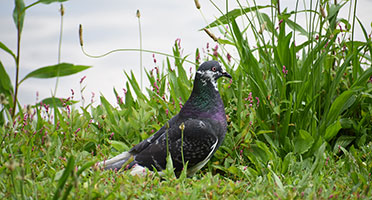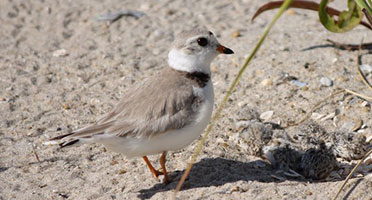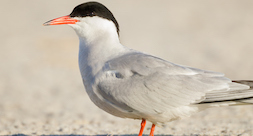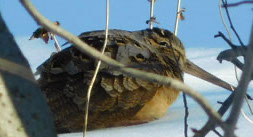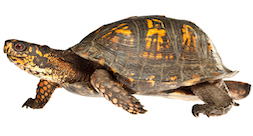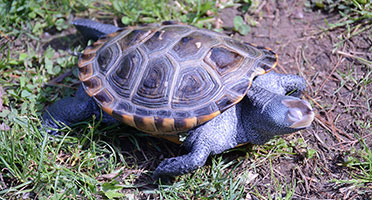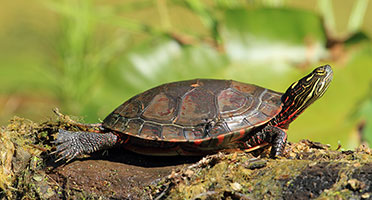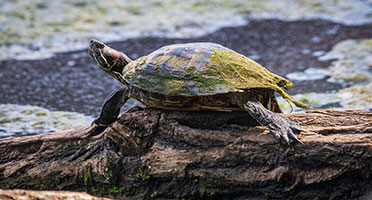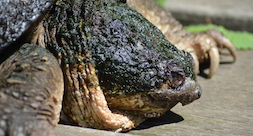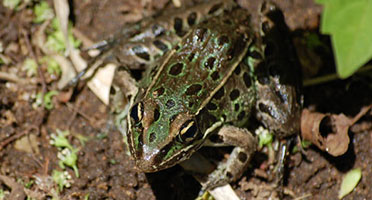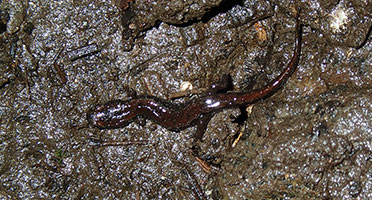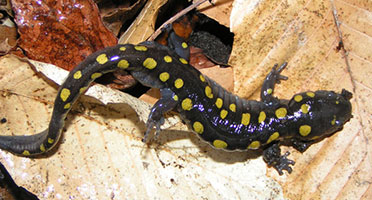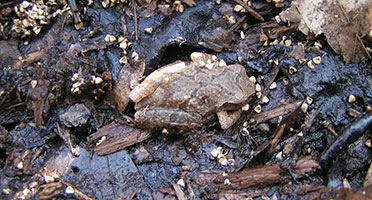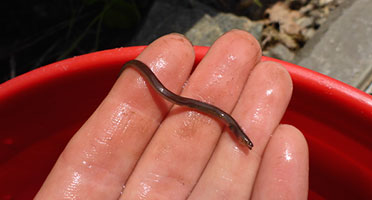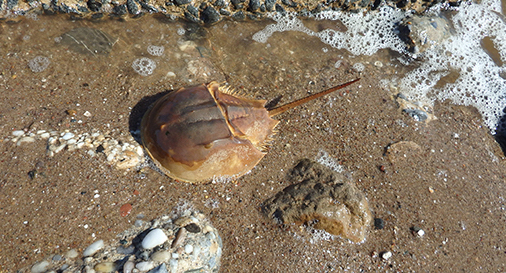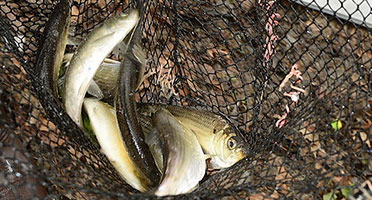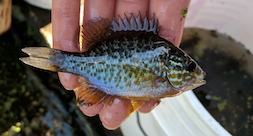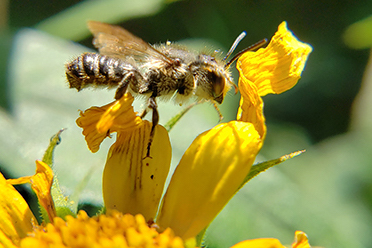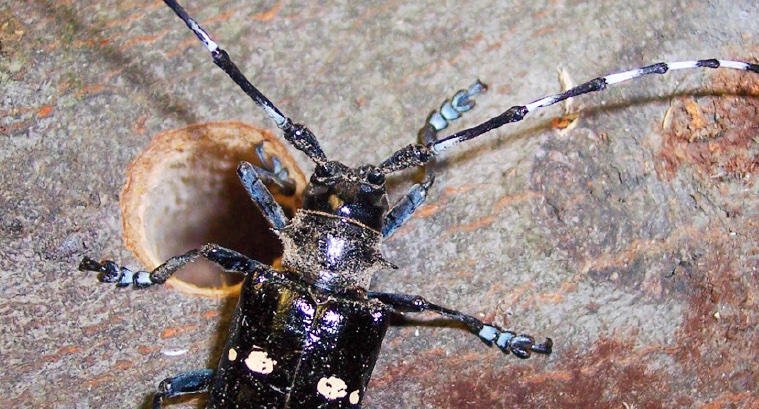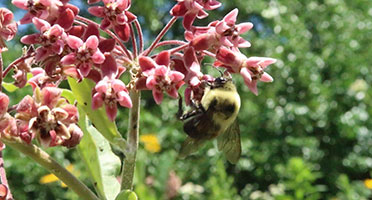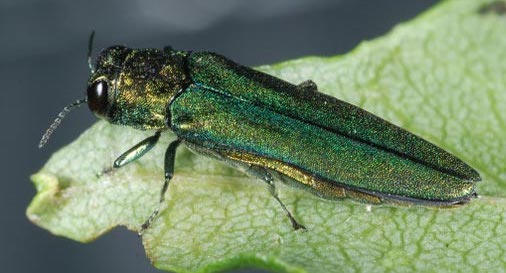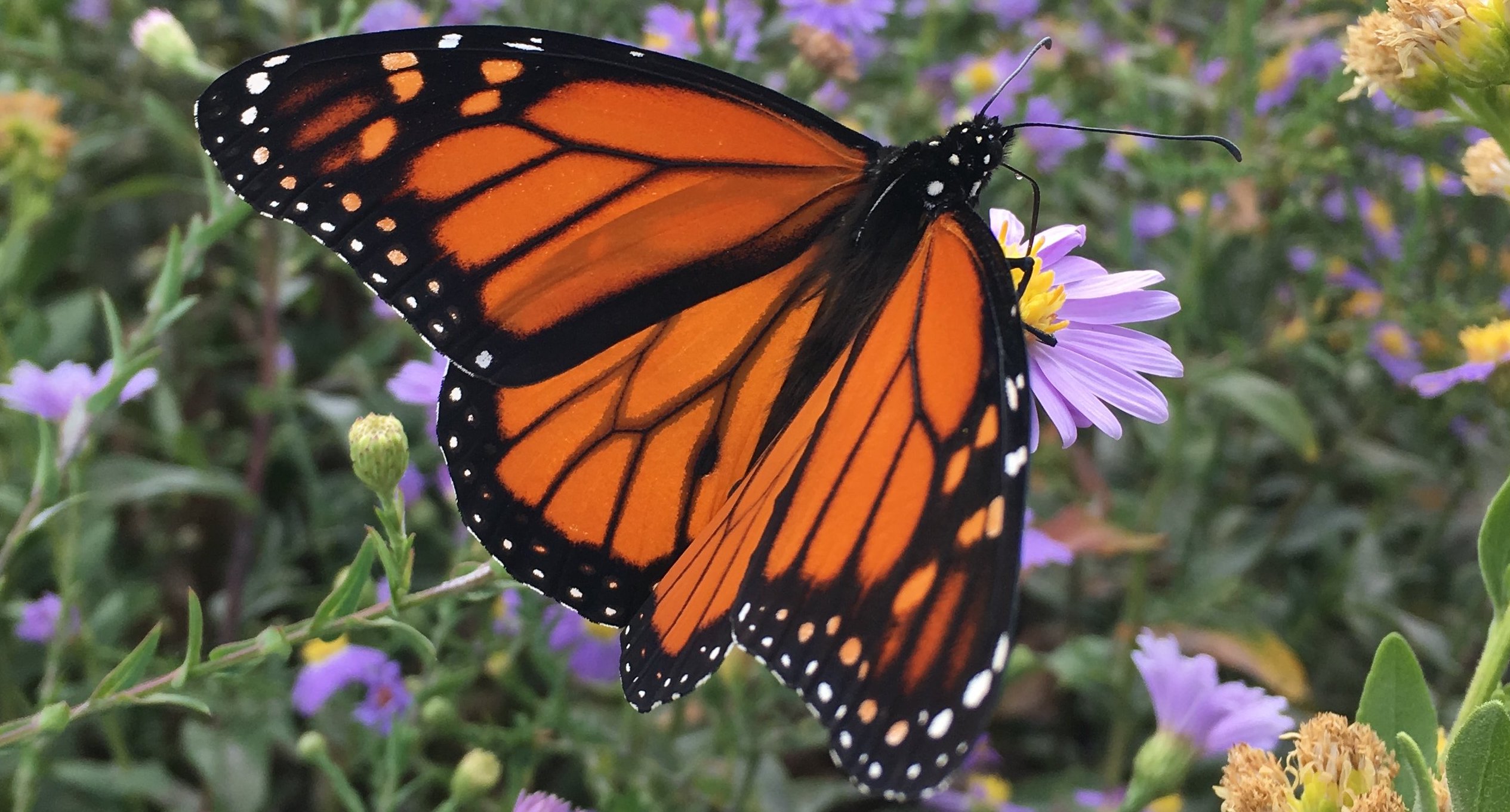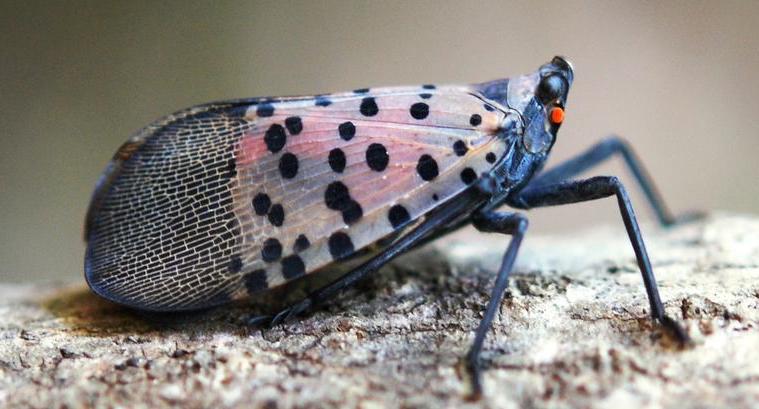Wildlife in New York City
What kinds of wildlife live in NYC?
New York has a reputation as a concrete jungle, but thousands of animal species can be found in our parks. Explore the wild world of New York City. Discover who's flying, crawling, and swimming around our parks, learn how we're caring for wildlife in need, and check out fun activities perfect for kids!
Discover which wildlife you'll likely encounter in the park this month and what they're up to right now! View the Urban Wildlife Calendar and Map
Wildlife depends on the health and safety of our parks for food and shelter. Some need a little more help than others. Learn how we're protecting rare and at-risk wildlife
Learn about peak migration season and how birds use the Atlantic Flyway to visit our parks. Learn more about spring and fall migration
Researching Wildlife
Looking to do scientific research in parks? File a Research Permit so we can ensure that your project is in accordance with our rules and guidelines, and we can assist you as much as we can.
What to Do When Encountering Wildlife
Most of NYC’s wildlife is not dangerous; however, maintaining a safe distance is the best way to protect your safety and the safety of our wild neighbors. Please remember that young animals often look as if they have been abandoned, when in fact their parents are nearby.
In the springtime, our parks welcome many baby animals, from young opossums to fawns. Meet the babies! Learn more
Report a Sighting
We're excited to hear about your wildlife finds! Let us know who you encountered on your adventure in the park.
If you see an injured animal, the best thing to do is leave the animal where it is, give it some distance, and call 311. The more information you can provide 311, the better
Abandoned domesticated animals (dogs, cats, chickens, rabbits, et cetera) should be brought to Animal Care & Control.
Meet Your Wildlife Neighbors
While visiting a park, you might expect to find squirrels, pigeons, butterflies, and even turtles, but did you know bald eagles, whales, herring, snakes, coyotes, and seals also live right here in New York City? Check out the wild animals of our urban jungle from the waters to the treetops, and take the Wildlife Coexistence Pledge!
Mammals
Bats
Several species of bats can be found in New York City, including little brown bats, big brown bats, and tri-colored bats. Bats can consume between 20% and 50% of their body weight in insects every night. They are the only mammals capable of true flight. Cave bats hibernate in the winter, and in cities like NYC, they will roost inside or beneath buildings and other human structures. Bats, like all other wildlife, should always be enjoyed and viewed from a distance. The incidence of bat bites in NYC is small. However, bats can carry and transmit rabies, and their teeth are so small that bites can sometimes go unnoticed. If you or a pet have a close encounter with a bat, or you find them in your home, seek medical attention, even if you don’t believe that a scratch or bite took place.
Coyotes
Eastern coyotes (Canis latrans), like many New York City residents, are naturally curious and adaptable. They can explore as much as 10 miles of open space in a single day—that’s roughly the distance from Wall Street to the top of Central Park. They are skilled hunters, but they can alter their diet to include whatever is available in their current environment, including insects, plant material, rodents, and unsecured trash. They are naturally wary of humans, and we can keep them that way by not offering them food and keeping our distance when we see them.
Eastern Chipmunks
Eastern chipmunks (Tamias striatus) are common in NYC parks. Like eastern gray squirrels, they are members of the Sciuridae squirrel family. Eastern chipmunks are smaller than squirrels, however, and have distinctive stripes along their backs and sides. They can often be spotted scurrying along the ground looking for food--sometimes with their cheeks stuffed with seeds, nuts, and other snacks. They prefer forested areas, as trees and smaller plants not only provide seeds and nuts for them to eat, but also protection from predators. Though they do not hibernate, they become much less active during the winter, remaining in their burrows and eating the seeds and nuts they had stored.
Eastern Gray Squirrels
Eastern gray squirrels (Sciurus carolinensis) can be seen in many NYC parks, leaping through wooded areas, chasing other squirrels around tree trunks, or perched on park benches nibbling on nuts and seeds. Despite their name, eastern gray squirrels come in a variety of colors, including gray, brown, cinnamon, and black. They live in dens made in the cavities of healthy trees, or in dreys, which are nests made of twigs and leaves constructed high up on tree branches. Squirrels are perfectly capable of finding their own healthy meals, and can even store food for later, so please do not feed them.
Raccoons
Raccoons (Procyon lotor) are the most widespread animal in New York State, found everywhere from secluded forests to urban centers like New York City. They can live in almost any habitat, including urban and residential areas, deciduous forests, parklands, and marshes. Raccoons will happily make their homes in tree cavities, hollow logs, rock crevices, burrows abandoned by other mammals, storm sewers, and small spaces under or within buildings. Although primarily nocturnal, raccoons can be seen day or night. As opportunistic feeders, they will eat whatever is easily accessible. They have been known to eat fruit, nuts, fungi, insects, worms, birds, turtles, eggs, mice, bats, squirrels, fish, snakes, frogs, dead animals, bird feeder seed, pet food, and human food waste. They can carry rabies, and have been known to get into unsecured trash. Please make sure to vaccinate your pets, and store trash in animal-proof containers.
Red Foxes
Red foxes (Vulpes vulpes) have a distinctive red outer coat, and black fur on their legs. Their chests and throats are generally white. Red foxes prefer areas with thick vegetation or lots of trees they can use for cover. They are often spotted on Staten Island and in the Bronx, including in the Greenbelt and in Pelham Bay Park. Urban foxes will create dens underground or inside human-built structures to raise kits, store food, and shelter during extreme weather. They can travel up 6 miles in a single day, and are more active in the winter as food becomes more scarce. Though mostly nocturnal, they can be seen during the day.
Seals
It may be hard for New Yorkers to believe, but our local winters are warm compared to areas further north where harbor seals (Phoca vitulina) spend most of their time. As a result, seals will migrate south to our ice-free waters during winter's coldest months for easier fishing. Seals begin to arrive in the NYC area in November, and can be seen throughout the winter and spring before returning north. The best places for viewing them are on remote shores or on sand banks during the day, but be sure to keep your eyes peeled—seals can be tricky to spot, and what looks like a rock or bottle floating on the water in the distance can sometimes be a healthy seal poking its head through the water.
Striped skunks
These small mammals are well-known for their defense mechanism: releasing a foul-smelling spray to deter predators. Striped skunks (Mephitis mephitis) can live in a variety of habitats, but they generally avoid forested areas and prefer to live near open spaces. In New York City, open lots and grassy areas in parks provide ideal habitat. Skunks can carry rabies, so please keep pets leashed when near skunk habitat. Skunks prefer to come out at night, when they can forage more safely for their food. Skunks will oftentimes den in burrows created by other animals, or under buildings and inside hollow logs. In winter, they retreat to these dens and tend to be less active. However, they do not hibernate.
Virginia Opossums
Virginia opossums (Didelphis virginiana) are North America’s only marsupial. They are also one of the few mammals that do not occupy a permanent living area as an adult. Instead, they set up temporary dens in tree hollows, buildings, and the abandoned dens of other animals. They are skilled climbers thanks to the thumb-like toes on their back feet and their sharp claws. They will often climb trees or other structures to look for food or escape predators. Once in a tree, opossums can use their long tails for balance. They are mostly nocturnal, but can be seen during the day.
White-Tailed Deer
White-tailed deer (Odocoileus virginianus) have established populations in the Bronx and throughout Staten Island’s green spaces. They are large mammals that can weigh up to 300 pounds. However, they’re also very mobile; they can swim, run up to 35 miles per hour, and jump several feet in the air. White-tailed deer eat a variety of plants, fruits, bark, and leaves. During their breeding season in the fall, known as the rut, they become more active as they look for mates. During this time, deer-vehicle collisions are more likely to occur. Drivers should stay alert and drive slowly near deer habitat. White-tailed deer can also carry ticks that harbor tick-borne illnesses like Lyme disease. Tick checks are recommended when leaving parks and greenspaces.
Birds
Our parks are perfect for birdwatching year-round. Discover some of the best places to go birding and what to look for!
American Kestrels
This little raptor is NYC’s smallest falcon, measuring 7 or 8 inches long when fully grown. Kestrels (Falco sparverius) have adapted well to urban environments, and love to set up nests on the tall and ornate buildings of New York City. They hunt insects and other small creatures in open grassy areas.
Bald Eagles
Bald eagles (Haliaeetus leucocephalus)—the national birds of the United States—spend their winters in woodland areas along waterways. As you walk through densely-wooded areas in New York City, like Inwood Hill Park, look up into the trees for a chance to spot one roosting or scoping out its prey. Bald eagles will sometimes steal prey from other raptors, including ospreys. Like red-tailed hawks, bald eagles perform aerial displays during courtship that involve locking talons and spinning through the air. Their breeding season begins in the late fall and generally ends around February. Eagles usually nest through April and chicks typically leave the nest by the end of July.
Canada Geese
Canada geese (Branta canadensis) are popular park residents, often spotted in groups near waterbodies and ballfields. Open lawns provide them with grass to eat and clear views of their surroundings, which helps them avoid threats. They adapt their diets based on the time of year, and feed on grasses, berries, grains, and aquatic vegetation. Canada geese mate for life, and usually nest near water. Some migrate to warmer areas for the winter, while others stay in the city year-round.
Eastern Wild Turkeys
Eastern wild turkeys (Meleagris gallopavo) are most commonly found within New York City on Staten Island. They prefer areas with a mix of woodland and open clearings. They usually roost at night in tall trees to avoid predators, but create their nesting sites on the ground in small depressions lined with grasses and leaves. Males, called toms, make the distinctive “gobble” sound. Females, called hens, are usually about half as large as males, topping out around 12 pounds. They can fly up to 60 miles per hour in short burst, and have excellent vision. They can behave aggressively and peck at people and pets, so please always observe from a distance.
Great Egrets
Great egrets (Ardea alba) are large wading birds, with wingspans that can reach close to five feet. They have long, all-black legs and feet, and a long S-shaped neck. They also have a long, sharp, yellow bill, which they use to spear fish and other aquatic prey. Great egrets can be spotted near both saltwater and freshwater habitats, and usually nest high in trees. Oftentimes they can be seen wading in waterbodies, searching for their next meal.
Mallards
Mallards (Anas platyrhynchos) are the most abundant and widespread duck in both New York and North America. Though they are generally migratory, urban mallards will stay in the city all year due to the abundance of food sources in New York City, as well as the relatively warmer winters compared to areas further north. Male mallards, called drakes, sport trademark metallic green heads, yellow, black-tipped bills, brown chests, and gray bodies. These bright, varied colors help them attract females. Females, called hens, are a mottled brown color throughout, with an orange bill that is sometimes speckled with black. Mallards have adaptable diets, and do not need food handouts. Food items commonly given to mallards, like bread and corn, are low in necessary nutrients. These handouts can displace healthy foods that the mallards naturally eat and cause them to become malnourished. Feeding can also promote water pollution and disease in waterfowl populations. In the interest of preserving mallards’ overall well-being, it is very important that New Yorkers avoid feeding them.
Ospreys
As fish-loving raptors, ospreys (Pandion haliaetus) spend most of their time near bodies of water, and generally build their nests along coastlines for easy access to their favorite food. They have been spotted at Marine Park, Freshkills Park, and at Jamaica Bay, among other natural areas. They return to the same nest every year in the springtime to mate and nest, and if you walk through our large shorefront parks at the right time of year, you can usually see osprey pairs nesting in very tall trees and on utility poles.
Owls
Winter is the best time for spotting owls in our parks as it marks the start of the breeding season, when they become more active. Owls that have been spotted in New York City in the past include great-horned owls, snowy owls, northern saw-whet owls, eastern screech owls, and barred owls. Owls prey on frogs, lizards, snakes, fish, mice, rabbits, birds, and squirrels. Many owls sleep in trees, some in tree cavities, and others in nests abandoned by other birds; snowy owls nest on the ground. Please help protect the owls of New York City by respecting their space -- please give them some distance to hunt and rest -- and by not feeding them.
Peregrine Falcons
Peregrine falcon (Falco peregrinus) courtship rituals take place in early March, and are amazing to witness. Males will soar to high elevations and then plummet downward, circling, and rolling in an acrobatic display meant to entice the females. They are skilled hunters, capable of diving down towards prey at over 200 miles per hour. Nesting begins in late March, when falcons begin creating scrapes on surfaces or taking over other species' nests. In NYC, peregrine falcons prefer nesting on tall structures like bridges and buildings. From late March to late April, the female lays three to four eggs. Peregrine falcons return to their nesting grounds on a yearly basis.
Pigeons
It may be hard to believe, but pigeons (Columba livia) are not originally from New York City. They were brought to the area hundreds of years ago from Europe, mostly to be used as food. Since then, they’ve struck out on their own, and are now a common sight in many city parks. Pigeons have an excellent sense of navigation, and are capable of using physical cues and the Earth’s magnetic fields to find their way around. In the city, they often nest on ledges atop man-made structures like buildings, bridges, and awnings. Males and females take turns incubating their eggs. Though they are attracted to food handouts, please refrain from offering them any. Leftover feed can often attract rodents.
Piping Plovers
Piping plovers (Charadrius melodus) are small shorebirds that are listed as endangered in New York State due to human-related habitat loss. Every summer they visit the Rockaways to nest and raise their chicks. Piping plovers begin to arrive at their breeding grounds in New York City around March and stay there until August. Then they begin to migrate south to their winter grounds. Since 1996, NYC Parks has closed off approximately one mile of beach every summer for piping plovers and other endangered shorebirds. This restricted area provides a place where plovers can nest and raise their chicks undisturbed while being closely monitored for productivity and possible threats.
Red-tailed Hawks
Red-tailed hawks (Buteo jamaicensis) are the most common hawk found in North America. Their nests are often constructed on trees or on buildings about 13 to 70 feet off the ground. Here in New York City, nests have appeared atop the RFK Bridge, the Unisphere, and on the ledges of buildings, among many other places. Red-tailed hawks hunt during the day, and can sometimes be seen gliding over the city’s parks looking for their next meal. They will adapt their diet to whatever is seasonally available, and mostly prey on rodents, reptiles, rabbits, squirrels, and other birds. Hawks can become ill if they ingest poisoned rodents, so consider using snap traps instead of rodenticide for rodent control.
Terns
Terns are just a few of the shorebird species that call New York City’s beaches their home. Both least terns (Sternula antillarum) and common terns (Sterna hirundo) can be found here. Both species are considered threatened in the state, which means they may become endangered. Common terns are larger than least terns, and have an orange beak. Least terns have a yellow beak, and a white patch on their foreheads. Their nesting colonies can number in the thousands. Terns can be very territorial, and will defend their nests by aggressively diving at any threats — and even striking them with their sharp beaks. So keep an eye out when walking on the beach!
Woodcocks
Woodcocks are also called timberdoodles. They stay close to the ground, and are slightly camouflaged, but if you look closely you can sometimes see them walking around the forest floor and poking their long bills in the soil in search of earthworms to eat. In the springtime, woodcocks perform aerial displays of courtship—males will fly upward in wide spirals, then zig-zag down to land near the females.
Reptiles
Eastern Box Turtles
You can recognize these turtles by their high domed shell. The males have red eyes, while the females’ eyes are yellowish-brown. They move slowly and retreat into their shells when they feel threatened. Because of their slow movements, eastern box turtles (Terrapene carolina carolina) are at great risk from cars.
Diamondback Terrapins
Named for the diamond-shaped growth rings on the top of their shell, diamondback terrapins (Malaclemys terrapin) are the only aquatic turtles in the city that live in brackish water (a mix of fresh and saltwater, such as Queens’ Alley Pond Park). The females tend to be larger than males, and lay their eggs on sandy beaches.
Painted Turtles
The painted turtle (Chrysemys picta) is a common freshwater turtle often seen basking on rocks, logs, and the shores of ponds and lakes. This native species is identified by bright yellow markings on its head and neck, and a dark-colored shell sometimes bordered with a thin red edge. They eat a variety of aquatic plants, invertebrates, and small fish.
Red-Eared Sliders (introduced species)
Red-eared sliders (Trachemys scripta elegans) are freshwater turtles named for the bright red markings often found on the sides of their heads. They spend most of their time in the water, but do come on land to bask in the sunlight. These turtles were likely introduced to parks by people releasing their unwanted pets. They can outcompete native species for food, harming the local ecosystem.
Snapping Turtles
The snapping turtle (Chelydra serpentina) is New York City’s largest turtle, and one of the largest freshwater turtles found in the world. It can grow up to 18 inches long and weigh up to 45 pounds. These turtles prefer to live in muddy ponds and lakes, where they can hide and surprise their prey more easily. Female snapping turtles lay their eggs in buried nests on land, laying 20-40 eggs at a time.
Amphibians
Atlantic Coast Leopard Frogs
Scientists first described this species (Rana kauffeldi) as distinct from the wide-ranging Southern Leopard Frog (Rana sphenocephala) in northwest Staten Island in 2014. This little frog, about 2.5 inches in length, favors open wet meadows, typically in freshwater near the coast. Large groups congregate during a short, early-spring breeding season and produce a noisy chorus. Once widespread and amongst the most common frog species in the NYC region, it is now found in only a handful of sites in NYC — all on Staten Island. Substantial evidence of population decline points to a combination of disease and habitat loss as causes.
Red-backed Salamanders
The red-backed salamander (Plethodon cinereus) is found in the northeast to North Central U.S. They are found in mature forests with deep soil. Red-backed salamanders need moisture and shade, and live under leaf litter (piles of leaves), rocks, moss, woody material, stones, fallen tree stems, and trunks. They are found in parks in all boroughs of NYC. They are characterized as long and slender, with a flattened body and rust-red stripe that extends from head to tail. They do not have lung. They breathe through their skin, which they must keep moist to better absorb oxygen. Their skin secretions are used for protection against some birds and snakes. Their diet includes insects such as mites, millipedes, spring tails, fly and beetle larvae, worms, flies, ants, beetles, and snails.
Spotted Salamanders
The spotted salamander (Ambystoma maculatum) is a vernal pool obligate species, meaning that populations cannot survive without vernal pools. Although this species spends most of its life cycle as terrestrial adults in the forest, it relies on vernal pools for breeding. Spotted salamander eggs and larvae cannot tolerate fish predation, and vernal pools, which fill in the fall through spring and dry by late summer, exclude fish. With human development, however, vernal pools became restricted to forest fragment preserved in parks. Today vernal pools used for amphibian breeding are found only in the Bronx, Queens, and Staten Island.
Spring Peepers
Spring peepers (Pseudacris crucifer) are the earliest frogs you'll see — or more likely, hear — as the weather starts warming up. Males are very vocal during the early spring, in the hopes of attracting a female. Spring peepers are small tree frogs that spend most of their time on the ground in moist woodland areas close to water. Although they can reproduce anywhere with freshwater, they thrive best in natural forests with vernal pools. These temporary pools provide tadpoles protection from predators like fish. Spring peepers hibernate during the winter in soft mud, underneath loose tree bark, or in fallen logs.
Aquatic Wildlife
American Eels
American eels (Aquilla rostrata) spend most of their life in freshwater. Around NYC they can also be found in the open waters of the harbor estuary during different life stages. Adults migrate out to the ocean during their final life stage to mate, and young glass eels travel up the estuary to freshwater locations to live out the rest of their lives. This species prefers to hunt at night and will seek shelter in crevices, or bury themselves beneath the sand or mud at the bottom of the water.
Horseshoe Crabs
Horseshoe crabs (Limulus polyphemus) are not actually crabs, but ancient creatures more closely related to spiders and scorpions. In May and June, you can spot horseshoe crabs coming up on our shores during high tide to mate and lay eggs. Eggs typically hatch within 14 to 30 days.
River Herring
These fish visit NYC’s freshwater rivers and streams with saltwater connections, most notably the Bronx River. In NYC, river herring can include two different, but almost physically identical, species: alewife (Alosa pseudoharengus) and blueback herring (Alosa aestivalis). They spend most of their lives in saltwater but only come to freshwater to spawn. Every spring, river herring from the Atlantic Ocean swim upstream to freshwater to spawn. Individuals return to the same waters where they hatched multiple times in their lifetime.
Sunfish
This family of fish is commonly found in our park’s freshwater lakes. In NYC you will find pumpkinseed (Lepomis gibbosus) and blue gill (Lepomis macrochirus) sunfish. Both have tall and flat body shapes that range in color from a brassy yellow to olive green. Look for a dark smudge spot behind their gill cover flap. Blue gills get their name from the iridescent blue to purple color of their cheeks and gill cover. Sunfish usually prefer quiet, shady areas, so keep an eye on sections of lakes that are shaded by trees or filled with aquatic plants for a chance to spot one.
Insects
Pollinators in Parks
Pollinators are an essential part of New York City's ecosystem. They play an important role in growing our beautiful gardens, food, and our city's plant biodiversity as they transfer pollen from flower to flower. Explore the lives of some lesser-known pollinators in our parks and the plants they love, and how we're helping native and visiting polinators thrive while they care for our city.
Asian Longhorned Beetles (introduced species)
Asian Longhorned beetles (Anoplophora glabripennis) are an insect originally from Asia, and known to attack a range of native tree species including maple, horse chestnut, elm, willow, birch, ash, and others. Asian Longhorned beetles were first discovered in the United States in Brooklyn in 1996. It is believed they were introduced through pallets and packing crates from overseas. Asian Longhorned beetles kill trees when larvae tunnel into the vascular system of the trunk and eat the inner wood. After a concerted management effort and borough quarantines on wood transport, NYC Parks, alongside state and federal agencies, declared longhorned beetles eradicated in NYC in October 2019.
Bees
Without pollinators, most flowering plants could not reproduce. One-third of our food plants, from tomatoes and squash to apples and almonds, depend on the services of a pollinator. Of all the pollinators, bees are the only organisms fully dependent on flowers for their survival — using nectar and pollen to raise their young and sustain their adults. Domesticated honey bees (which are an introduced species in NYC) only pollinate about 15 percent of the hundred or so crops that make up the world's food supply. At least 80 percent are pollinated by wild bees and other wildlife. More than 225 bee species have been recorded in New York City alone. Fortunately, because insect pollinators are tiny, there is much that can be done in urban environments to support them, even in small habitat patches.
Dragonflies and Damselflies
Dragonflies and damselflies are important ecological components of both aquatic and terrestrial environments. They serve as predators of other insects, fish, and amphibians. They are also an important food source for fish, amphibians, birds and other dragonflies. They start life as a tiny egg. In the larval stage they are called a nymph or larva. The larvae live underwater for one or more years. Damselfly larvae have feather-like gills at the end of their abdomen, while dragonfly larvae do not. After months—or even years--of growing and molting, the larva crawls out of the water and the adult slowly emerges. Parks has inventoried dragonflies in NYC since 1996, recording the first official sightings in NYC of five state-rare species, including the state-threatened little bluet (Enallagma minisculum).
Emerald Ash Borer (introduced species)
The emerald ash borer (EAB) is a beetle originally from Asia that infests and kills North American ash species. EABs were first discovered in southeastern Michigan and adjacent areas in 2002. It is thought to have been introduced in the 1990s on solid wood packing material originating from Asia. The beetle is endemic to Asia as well as parts of eastern Russia. EABs cause virtually 100% mortality of all ash species. Most trees die within two to four years of infestation. The beetle has already destroyed hundreds of millions of ash trees since its discovery in Michigan. NYC discovered EABs in Prospect Park in October 2017.
Monarch Butterflies
Monarch butterflies (Danaus plexippus) have a four-stage life cycle. They hatch from eggs into hungry caterpillars. This is followed by the third stage, when the caterpillar enters a chrysalis and transforms into the iconic black and orange butterfly. Every year, first generation monarch butterflies travel thousands of miles south for the winter. Their winter migration usually begins in September. They can travel up to 50 miles a day, and some journeys reach up to 3,000 miles in total! Migrating monarchs can be observed along the city’s beaches and coastal parks. They can also be seen stopping in our butterfly gardens to rest and refuel during their travels. How monarchs are able to navigate their way across unfamiliar terrain is unknown. Some speculate that the butterflies rely on the earth’s magnetic field for guidance, while others believe that the directions are embedded into the monarch’s genetic code. In June, monarch butterflies begin passing through NYC again on their migration back north.
Spotted Lanternflies (introduced species)
The spotted lanternfly (Lycorma delicatula) is a planthopper from East Asia, first discovered in New York City in July 2020. It is a potential threat to a wide range of trees and agricultural crops, walnut, willow, grapes, hops, apples, blueberries, and stone fruits. The Tree of Heaven is its host tree and is required for its reproduction. Spotted lanternflies damage trees by massing on the trunks and branches, causing surface wounds that create a sticky, honeydew substance around the base of the tree. Infestations can impact park and backyard experiences, and make infested trees vulnerable to blights and other pests. To learn more about our trees, visit nyc.gov/parks/trees.
WildlifeNYC
Visit WildlifeNYC to learn more about local urban wildlife and how best to coexist with them, and to report coyote, deer, fox, and raccoon sightings.



